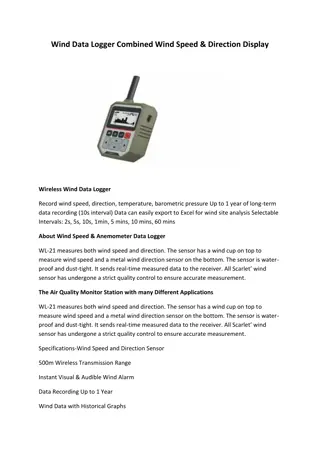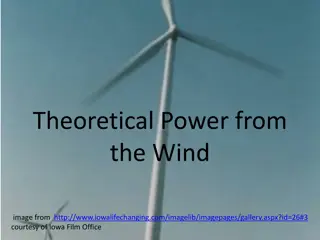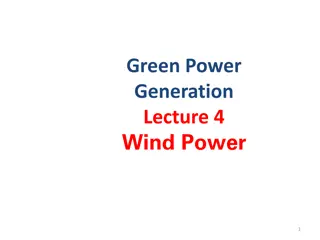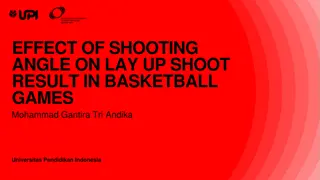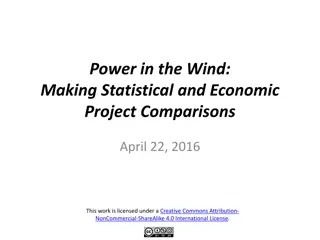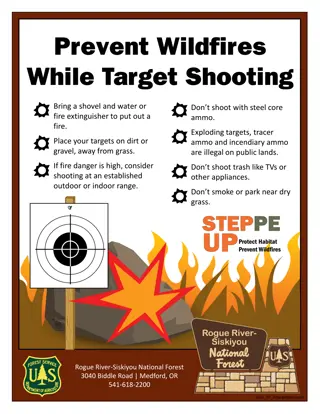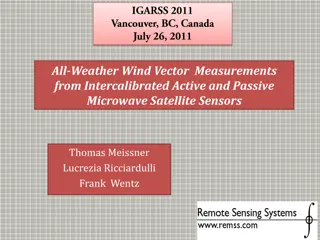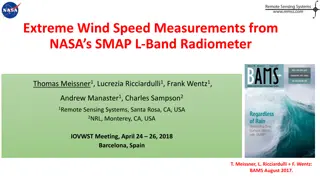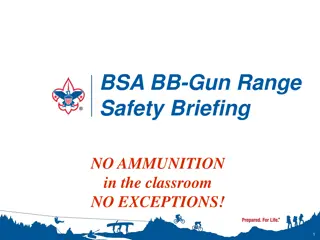Wind Reading Essentials for Improved Accuracy in Shooting
Enhance your shooting skills by mastering wind reading basics such as wind speed, wind direction, flag patterns, and their effects on projectiles. Understand how to interpret wind conditions to make accurate shots and improve your scoring. Explore the key factors influencing the flight path of a projectile and utilize resources for further reference.
Download Presentation

Please find below an Image/Link to download the presentation.
The content on the website is provided AS IS for your information and personal use only. It may not be sold, licensed, or shared on other websites without obtaining consent from the author.If you encounter any issues during the download, it is possible that the publisher has removed the file from their server.
You are allowed to download the files provided on this website for personal or commercial use, subject to the condition that they are used lawfully. All files are the property of their respective owners.
The content on the website is provided AS IS for your information and personal use only. It may not be sold, licensed, or shared on other websites without obtaining consent from the author.
E N D
Presentation Transcript
Basic Wind Reading Simple things to watch for and assist you in getting better scores By Rob Rush
The Perfect Shot The flight path of a projectile is influenced by a number of factors such as; Bullet shape ( Ballistic Coefficient) Cross range winds Atmospheric Conditions Gravity Distance to target Muzzle Velocity Accuracy of discharged shot A good source of further reference for in depth information on these factors is available in reference books on target shooting and reloading or via bullet makers web sites such as the Sierra website; http://www.exteriorballistics.com/ For those with modern phones you can also download the ballistics tables on a number of Apps as well.
Wind Reading 101 In simple terms the wind factors that will influence the projectile are: Wind Speed Wind Direction How to measure speed. For ease of reference shooters use 5 basic speeds which are: Gentle (4 mph or 6kph) Moderate (8 mph or 13kph) Fresh (12 mph or 19kph) Strong (16 mph or 25 kph) Very Strong (20 mph or 32 kph)
Flag Patterns of wind speed 4mph. 16mph. 8mph. 20mph 12mph
Wind Direction Effects Wind can vary in direction over 360 degrees You only need to understand the effects of a 90 degree quadrant as these wind speed calculations can than be used for any direction of wind For easy reference shooters refer to wind similar to the time on a clock face. So a 3 o clock wind has the same effect as a 9 o clock wind just as a 7 o clock wind has the same effect as its opposite a 1 o clock wind Wind speed effects on a bullet are NOT uniform at varying angles i.e. a 45 degree angle does NOT equal a 50% wind effect. Wind Directions can impact on elevations as well. At Ripley this is one of the important things that shooters need to keep in mind due to the high incidence of fish tailing winds.
Wind direction and grouping You need to look for the predominate PATCH of wind to try and shoot in so that minimal impact is made to your groups. Generally in a wind that is Fresh and above and blowing up range its best to watch the flags closest to the targets In a Fresh wind and above blowing down range its best to watch the flags closest to the shooters. For Cross winds and winds angling between 30 degrees and 90 degrees its better to watch the flags closest to the shooter On some ranges like Ripley with it gullies and ridges you may need to add and subtract wind readings due to cross winds i.e. the flags at the firing point may be going one way whilst those at the butts are opposite. You need to break the range up into its component parts and go with the net wind result. It is easier to get better scores in squarer winds than fishtailing winds due to this effect that directional changes can have on groups
Wind direction and grouping Grouping in squarer winds is easier due to the impact of only 1/10th wind variation required between 65 degrees and 90 degrees
Wind direction and grouping Grouping in fishtailing winds is harder due to the impact of up to 9/10th wind variation required between 0 degrees and 65 degrees
Rules of Thumb On all targets the scoring rings up to the 4 line are generally at minute increments from centre on all ranges So the V bull is minute from centre to bull line The Bull is minute from v to 4 line The total bullseye is about 2 minutes across The 4 line is about another minute to the 3 line But all minutes are not the same. Just to confuse us when most TR shooters using a CENTRAL sight and other TR shooters talk minutes they may have different calibrations on the sights. The Australian Central sight requires an extra 22% adjustment to the minutes that English Sights (and their plotting tables) produce. So be careful when comparing notes with others. I now have both English and Australian Central sights in use and to adjust I think of my English s as 1/3 s in Australian adjustments. There are easy to use wind charts readily available and are a good reference point when you get a little lost in the wind. I still take my tables down with me sometimes in big winds for a little security.



